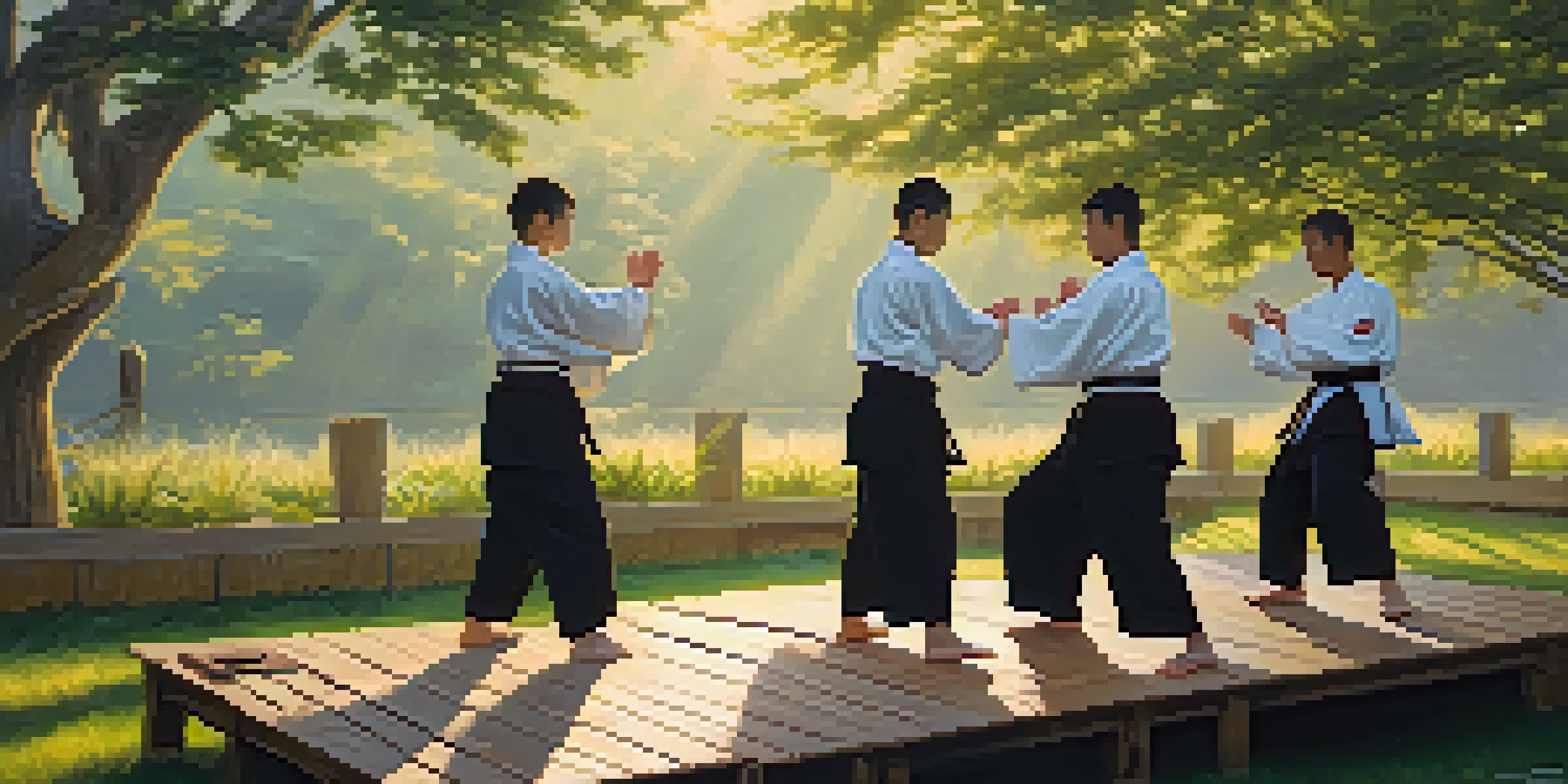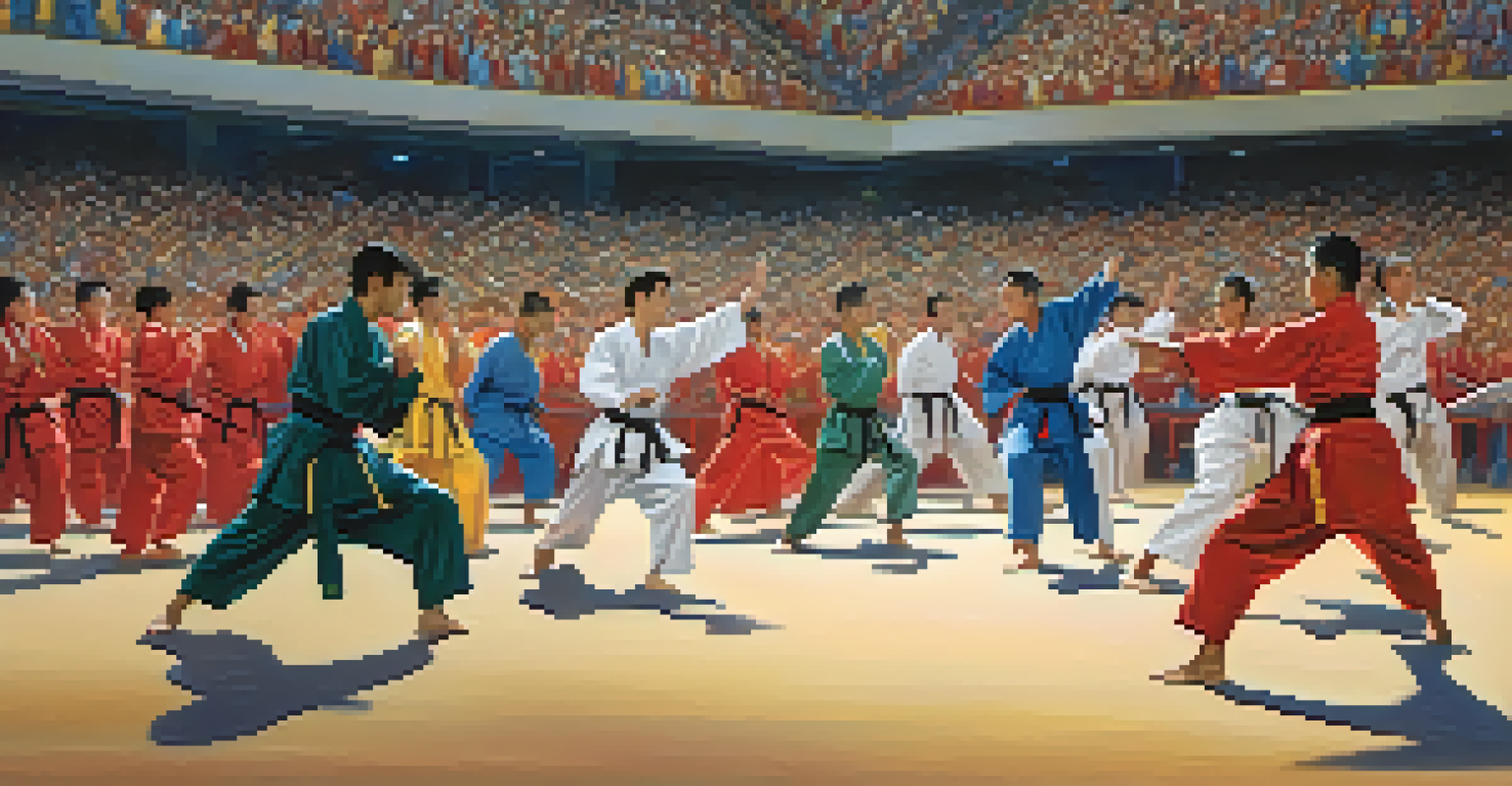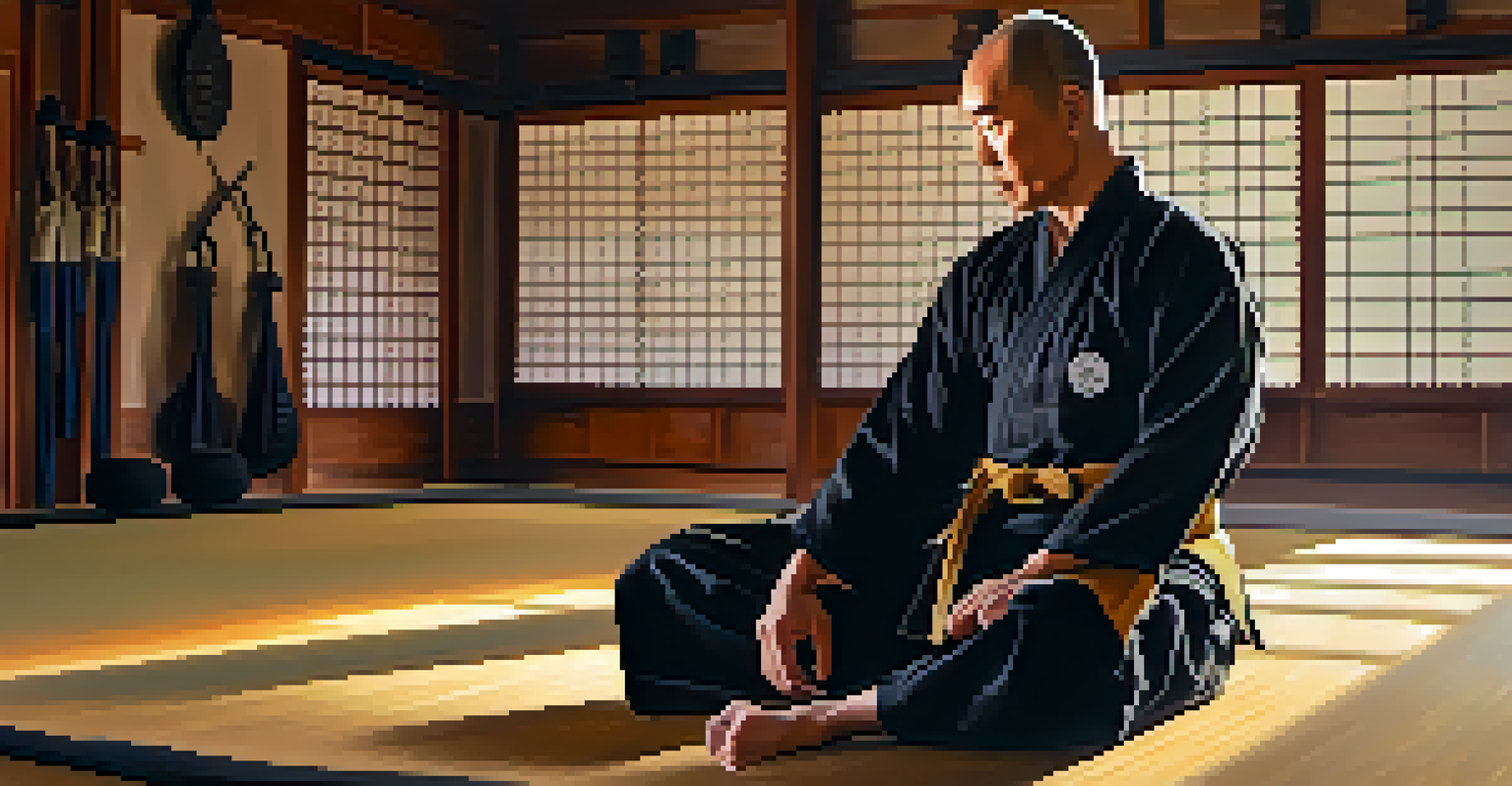Impact of Globalization on Traditional Martial Arts Practices

Understanding Globalization and Its Reach
Globalization is the process of increased interconnectedness among countries, driven by trade, technology, and cultural exchange. This phenomenon allows ideas and practices to spread rapidly across borders, impacting various aspects of life, including martial arts. As traditional practices encounter global influences, their forms and meanings can evolve and sometimes even blend with other styles.
Globalization means we are all part of a world community. It offers us the opportunity to learn from each other and to grow together.
For instance, martial arts like Karate and Taekwondo have seen their techniques and philosophies adopted worldwide, leading to new interpretations and practices. This shift often creates a dialogue between traditionalists who seek to preserve authentic practices and modern practitioners who embrace innovation. Consequently, the essence of these arts can either be enriched or diluted, depending on how the changes are approached.
Ultimately, understanding globalization's role helps us appreciate the dynamic nature of martial arts as they adapt to a rapidly changing world. As cultures interact, they don’t merely exchange goods but also philosophies, techniques, and identities, which can significantly alter traditional practices.
Cultural Exchange: A Double-Edged Sword
Cultural exchange, a key aspect of globalization, can breathe new life into traditional martial arts. For example, when practitioners from different backgrounds come together, they can share techniques and philosophies that enhance their understanding and skills. This communal learning often leads to the creation of hybrid forms of martial arts, which can attract new enthusiasts.

However, this blending can also lead to concerns about cultural appropriation, where traditional practices are stripped of their context and meaning. Such situations can alienate practitioners who are deeply connected to the cultural roots of their martial art. For instance, when traditional movements are showcased in commercial settings without proper respect or understanding, it may lead to a dilution of the art's original intent.
Globalization Shapes Martial Arts
Globalization fosters the evolution and blending of traditional martial arts as cultures exchange techniques and philosophies.
Thus, while cultural exchange can enrich martial arts practices, it’s crucial for practitioners and instructors to approach it with awareness and respect. Balancing innovation with the preservation of tradition is key to ensuring that the essence of these arts remains intact amidst the changes.
The Role of Technology in Martial Arts Evolution
Technology has played a significant role in the globalization of martial arts by facilitating access to information and training resources. Online platforms, video tutorials, and social media enable martial artists to learn from masters across the globe, regardless of geographical limitations. This accessibility can inspire practitioners to adopt new techniques and philosophies, enhancing their overall practice.
Tradition is not the worship of ashes, but the preservation of fire.
However, this technology-driven approach can sometimes lead to a superficial understanding of martial arts. Without the guidance of a qualified instructor, individuals may miss vital nuances that come from in-person training and cultural context. For example, the subtleties of a particular kata or form may be lost when learned solely through online videos.
In essence, while technology can democratize access to martial arts, it also presents challenges in maintaining the depth and richness of traditional teachings. Striking a balance between leveraging technology and preserving the integrity of martial arts practices is crucial for future generations.
Global Competitions: Bridging Cultures and Styles
Global martial arts competitions, such as the World Karate Championships or the International Taekwondo Federation events, showcase the diverse styles on an international stage. These events not only highlight the skills of practitioners but also serve as a melting pot of cultures. Competitors from various backgrounds come together, sharing their unique interpretations of martial arts.
Participating in these competitions can foster mutual respect and understanding among practitioners, as they learn from each other's strengths and styles. However, it can also lead to a competitive environment that prioritizes winning over traditional values. Some traditionalists argue that this commercialization can detract from the spiritual and philosophical aspects of martial arts.
Cultural Exchange's Dual Nature
While cultural exchange can enrich martial arts, it also raises concerns about cultural appropriation and the loss of traditional meaning.
Therefore, while global competitions can promote unity and cultural exchange, they must also ensure that the core principles of martial arts—such as respect, discipline, and humility—remain at the forefront. This balance is essential for preserving the integrity of martial arts as they evolve.
Adapting to Modern Lifestyles: New Relevance
In today's fast-paced world, traditional martial arts are adapting to meet the needs of modern practitioners. Many schools are incorporating fitness elements, self-defense techniques, and stress relief practices into their curricula, making martial arts more accessible and relevant. This shift has attracted a broader audience, including those who may not have previously engaged with traditional practices.
For example, classes now often focus on personal development, mental health benefits, and community building, appealing to individuals seeking holistic well-being. This adaptability can help preserve traditional martial arts by ensuring they remain relevant in contemporary society. However, it raises questions about whether the original intents and teachings of these arts are being maintained.
Ultimately, adapting martial arts to fit modern lifestyles while respecting their foundational principles can create a sustainable practice. This balance allows traditional martial arts to flourish in a globalized world, ensuring they continue to resonate with future generations.
The Influence of Media on Martial Arts Perception
Media plays a pivotal role in shaping public perception of martial arts, often romanticizing or sensationalizing them. Movies and TV shows featuring martial arts heroes can spark interest and increase participation in these practices. However, they may also create misconceptions about the realities of training and the philosophy behind martial arts.
For instance, films often portray martial arts as a way to achieve instant mastery or as a means to settle conflicts through violence. This portrayal can overshadow the true essence of martial arts, which emphasizes discipline, respect, and personal growth. Such misunderstandings can lead to unrealistic expectations among new practitioners who may be drawn in by flashy moves but unaware of the deeper principles involved.
Technology and Martial Arts Training
Technology enhances access to martial arts training but may lead to superficial understanding without the cultural context.
Consequently, while media can promote martial arts and attract new followers, it is important to present a more accurate portrayal of their values and practices. Educators and practitioners must work together to offer insights that highlight the richness and depth of martial arts beyond what is often depicted on screen.
Preserving Tradition Amidst Global Change
As the influence of globalization continues to reshape traditional martial arts, preserving their core values becomes increasingly important. Many martial arts schools and organizations are actively working to maintain authentic practices while embracing necessary adaptations. This commitment to preservation ensures that the teachings and philosophies are passed down through generations.
One effective way to preserve tradition is by emphasizing cultural education alongside physical training. Schools that incorporate history, philosophy, and the cultural context of martial arts enrich the learning experience, helping students appreciate the art form's roots. This holistic approach fosters a deeper connection to the martial art and its heritage.

Ultimately, preserving tradition in a globalized world requires a delicate balance between honoring the past and embracing the future. By prioritizing education and authenticity, martial arts can continue to thrive, remaining a vital part of cultural identity while evolving to meet modern needs.